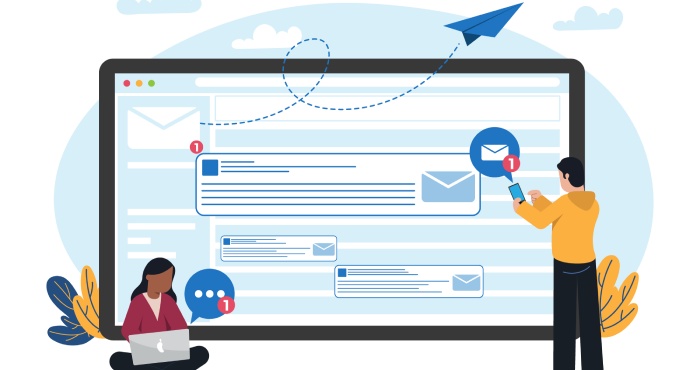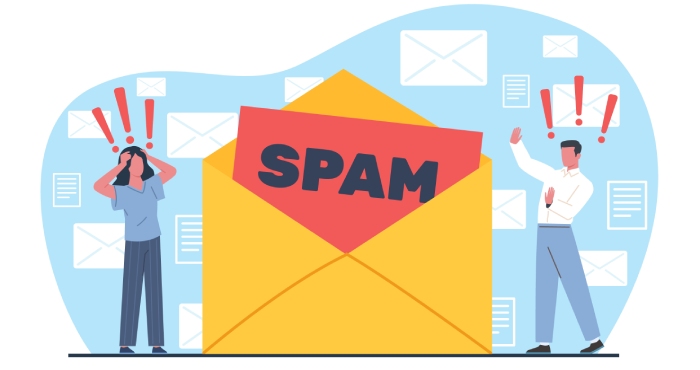How to Use SMTP for Cold Email: Tips and Best Practices
Cold emailing can feel like sending messages into a void, hoping for responses that often don’t come. If you’ve ever wondered how to break through the noise and improve your chances of getting noticed, you’re not alone. Many people dive into cold emailing without understanding the best practices that can significantly increase their success rates. This guide is packed with tips and strategies on using SMTP effectively to enhance your cold email efforts.
By following these straightforward recommendations, you’ll set yourself up for better responses, making it easier to connect with potential clients or partners while making sure your emails land in inboxes rather than spam folders.
To effectively utilize SMTP for cold email, it is essential to set up a robust personal SMTP infrastructure that enhances deliverability and allows for IP and domain rotation. This approach helps maintain a positive sender reputation and reduces the likelihood of your emails being flagged as spam, ultimately improving your outreach success.

Choosing an SMTP Server for Cold Email
When it comes to selecting an SMTP server, several factors come into play that can greatly influence your email’s success. The first thing to consider is reputation. An established server with a solid reputation often translates to better deliverability rates, meaning your emails are much less likely to land in the dreaded spam folder. Think of it like picking a respected restaurant; customers flock there simply because they know the food is good and safe. Similarly, selecting a reputable email service gives your campaigns an immediate boost in credibility.
After reputation, you also need to think about scalability. You might start your campaign small, sending just a few hundred emails. However, as your outreach grows, you’ll want a service that can keep pace without issues. Reliable SMTP providers should have the infrastructure that can support your needs no matter how they grow.
Another vital consideration is customer support. No one wants to deal with technical hiccups when you’re on a deadline or in the midst of a big marketing push. Opt for an SMTP service known for its responsive support team. Imagine trying to cook a complex dish without having someone to troubleshoot when things go awry—you’d be at a loss! With effective customer support, you can confidently navigate issues and maintain your momentum.
Alongside these functionalities, let’s not overlook cost. It’s essential to find a service that balances quality and pricing. A costly plan may offer features you don’t need, while a cheaper alternative might lack crucial capabilities you would rely on. Therefore, take time to review pricing models against what you actually require.
Equally important is understanding the sending limits imposed by your chosen server. Each SMTP provider has different rules regarding how many emails you can send daily or monthly. If you’re planning a large campaign, those limits could hinder your success and leave subscribers waiting too long for response emails or other important messages.
Choosing the right SMTP server involves evaluating its reputation, scalability, customer support, cost, and sending limits. By carefully weighing these factors against your specific needs, you’ll set yourself up for better email deliverability and ultimately improved response rates from your campaigns.
With these critical considerations in mind, let’s now explore how these services stack up against other commonly used systems for email delivery.
SMTP vs Other Sending Systems

SMTP, or Simple Mail Transfer Protocol, often becomes a topic of comparison alongside more contemporary solutions such as API-based services and web-based email platforms. Each option has its strengths and weaknesses, making it essential to evaluate them based on your specific emailing needs.
Comparison Criteria
| Feature | SMTP | API-Based Email Services | Web-Based Email Platforms |
| Flexibility | High | Medium | Low |
| Ease of Use | Medium | High | High |
| Customization | Extensive | Moderate | Limited |
| Security | Can be High with TLS | Generally High | Variable |
| Deliverability | Depends on setup | Often optimized | Often limited |
| Cost | Varies | Subscription-based | Low to Free |
When we look at flexibility, SMTP shines brightly as it allows for extensive customization options that cater to distinct business requirements. You can configure your own server settings and develop a deep understanding of the process—something that puts you in control.
In contrast, API-based email services tend to offer a moderate level of flexibility, which is generally sufficient for most users but may leave advanced customizers feeling restricted. Web-based email platforms, while user-friendly, rank the lowest in terms of flexibility since they generally enforce their own templates and structures.
The ease of use also varies significantly. API-based services are designed for simplicity; they provide an almost plug-and-play experience, whereas both SMTP setups and web-based platforms require varying degrees of technical understanding. With SMTP, you must navigate server configurations—things that might scare off users looking for straightforward solutions. Conversely, web platforms often come equipped with easy-to-use interfaces that allow anyone to start sending emails within minutes.
Diving deeper into customization, SMTP grants users the capability to adjust nearly every aspect of their email delivery process. This means fine-tuning your infrastructure according to best practices in cold emailing. On the flip side, API services offer moderate customization but might not interact with your existing systems as seamlessly. Web-based platforms fall short by imposing strict limitations on modifications, which could hinder your outreach efforts.
Security is another vital aspect. You can achieve high levels of security with SMTP when configured correctly using TLS (Transport Layer Security). API-driven systems usually maintain high security standards as well; however, web-based platforms may exhibit varying levels of security depending on the provider.
Understanding deliverability is essential at this point—while SMTP can yield impressive rates, it heavily relies on your setup skills and attention to detail. In contrast, many API-based services optimize this automatically to improve inbox placement rates effectively. Meanwhile, web systems struggle with deliverability due to various restrictions imposed by providers.
Finally, the cost can play a significant role in determining how you proceed with your email outreach strategy. Setting up an SMTP server bears a varied price tag dependent on usage volume and other factors. API services usually operate on a subscription basis with scalable pricing tiers designed for growing businesses. Web-based platforms often offer budget-friendly options, including free plans that may have certain limitations worthy of considering.
As you weigh these considerations, it’s important to understand how to set up your preferred choice effectively for optimal results in your email strategies moving forward.
Setting Up Your SMTP Configuration

First things first, obtaining your SMTP credentials is crucial for getting started. Contact your chosen SMTP service provider, whether it be SendGrid, Mailgun, or Amazon SES, and request the essential details: server address, port number, username, and password. This information forms the foundation of how your emails will be sent out into the world. If you’re unsure which provider to choose, consider their reliability and the features they offer—many experienced users have found that each option has its pros and cons based on personal needs.
Once you have your credentials in hand, it’s time to dive into configuring your email client or marketing platform.
The next step is configuring your email client. This involves inputting the SMTP credentials you’ve just acquired. Ensure that you align with security requirements; using SSL/TLS for encrypted connections is critical here. A simple misconfiguration could lead to sending errors or even getting flagged as spam, so double-check each entry for accuracy. It might seem tedious, but setting everything correctly promotes a smoother operation later and reduces deliverability issues.
Testing is not just a formality—it’s a vital part of ensuring your setup works as intended.
After configuration comes testing your connection. This step transforms theoretical knowledge into practical application. Send yourself a test email using Nureply to see if it arrives in your inbox rather than the dreaded spam folder. Monitor its status: was it sent without error? Did you receive it promptly?
These checks are essential because they validate whether your settings were configured correctly or if adjustments are needed. A Reddit thread noted that several users resolved their delivery issues simply by consulting support documents provided by their SMTP services—never hesitate to reach out for help if needed!
With your SMTP configuration set up properly, you’re positioned well—but don’t forget about one of the most critical aspects of outreach: enhancing the quality and management of your contact list.
Building and Managing Your Cold Email List

Crafting a targeted email list isn’t just a box to check off; it’s truly the heart of successful cold emailing strategies. The process begins with building the list, which sets the stage for everything that follows. The first step involves sourcing contacts from reputable databases. You want to aim for quality over quantity, ensuring the individuals on your list align with your target audience.
Imagine you’re trying to sell artisanal coffee; listing CEOs of tech companies might not be as fruitful as reaching out to culinary professionals or cafe owners. Tools such as LinkedIn Lead Gen Forms or hunter.io can be valuable allies here. They help you collect legitimate contacts, allowing you to sift through and find who would potentially benefit from your offerings.
Once you’ve gathered initial contacts, it’s vital to think about managing them effectively. A common pitfall is neglecting maintenance, leading to an inflated list filled with unresponsive or invalid emails. Regularly cleaning your list is fundamental—just like you wouldn’t want spoiled ingredients in your pantry, you don’t want dead weight dragging down your email campaign’s performance. By employing email verification tools such as NeverBounce, you can preemptively tackle high bounce rates before they become a headache.
Segmenting your email list further enhances your outreach efforts. Imagine receiving an email that feels tailored to you—are you more likely to engage or ignore it? By segmenting based on criteria like industry, job title, or even engagement level, you personalize communication, improving both open rates and responses. This approach allows for messages that resonate directly with the recipient’s needs and interests, making each email feel like a conversation rather than a generic pitch.
With a well-maintained and organized list, you’re not only optimizing for results but also respecting the time and inbox space of your recipients.
Having established best practices for managing your email list, it’s time to explore how to improve deliverability and effectively monitor engagement metrics.
Deliverability and Tracking Open Rates

Enhancing deliverability is akin to setting the stage for a grand performance; if the venue doesn’t allow for your talent to shine through, your efforts can go unnoticed. The first step is optimizing your email content, which means steering clear of spam triggers that could relegate your hard work to the dreaded junk folder.
Excessive use of images can make your emails look unprofessional and lead them straight into spam territory. Instead, aim for concise and engaging text that communicates your message clearly while maintaining visual appeal through well-placed graphics.
Furthermore, authentication of your sending domain is crucial. By configuring SPF, DKIM, and DMARC records, you establish a trust relationship with email recipients and ISPs alike. This not only enhances the likelihood of successful delivery but also boosts your sender reputation over time. The bottom line? Always treat deliverability as a priority rather than an afterthought.
Tracking Metrics
Once you have sent out your emails, the next step involves diligent tracking of critical metrics like open rates and click-through rates (CTR). These metrics provide insight into how well your email campaigns resonate with readers. Utilizing tracking tools such as Mailtrack or GMass will give you detailed analytics that goes beyond mere numbers.
You’ll be able to see exactly who opened your emails and when they clicked on links, providing a wealth of information to refine your future strategies.
It’s worth mentioning that according to a survey, businesses that actively monitor their email metrics reported a 34% boost in overall engagement. In contrast, those who opted out of tracking saw stagnation in their results—a clear indication that knowledge is power when it comes to email outreach.
Regular assessment allows you to adapt your approach swiftly if certain campaigns are underperforming.
Adhering to best practices in deliverability and rigorous tracking enhances engagement rates and ensures that you’re allocating resources efficiently in future campaigns.
Linking these insights with adherence to legal standards ensures that while you’re maximizing results, you’re also abiding by ethical guidelines—an essential balance for sustainable outreach success.
Legal and Ethical Guidelines for Cold Emailing

Staying compliant with laws and maintaining ethical standards is essential in cold emailing. When you’re sending out emails to potential clients or customers who have never interacted with you before, it is crucial to understand the legal landscape that governs this practice. Regulations like the CAN-SPAM Act, GDPR, and CASL enforce strict guidelines about how you can connect with recipients — failure to comply can lead to penalties and reputational damage.
Legal Requirements
It’s imperative to understand that all commercial emails must include clear opt-out mechanisms. This means if a recipient doesn’t want to hear from you anymore, they should be able to unsubscribe easily within the email itself. Emails must also contain accurate sender information; misrepresenting who you are not only violates laws but can undermine your credibility.
Furthermore, respecting privacy rights is non-negotiable. As part of GDPR, any marketing outreach to EU residents requires explicit consent before sending emails. Keeping these legal requirements forefront while crafting your outreach helps avoid nasty surprises down the line.
For example, failure to follow these regulations can result in fines reaching into the thousands of dollars, depending on the jurisdiction.
Ethical Considerations
Beyond legality, ethical considerations play a significant role in how your emails will be received. Always aim to provide value in each email you send. Recipients are far more likely to engage with content that meets their needs or solves their problems. Deceptive practices are a surefire way to alienate your audience; transparency is key. Personalization goes a long way, but ensure you clearly articulate why you’re contacting them and how it benefits them specifically.
Spamming recipients could not only get you blacklisted but also tarnish your brand’s reputation irreparably. A more thoughtful approach not only keeps you compliant but builds relationships based on trust and respect.

One professional shared on LinkedIn how adhering strictly to ethical standards kept them compliant while also leading to higher engagement rates and improved business relationships across the board. When potential clients feel valued rather than targeted as mere numbers, they’re more likely to respond positively.
Keeping these guidelines in mind ensures your cold emailing efforts remain effective yet compliant, paving the way for productive communication and positive relationships.
By following both legal and ethical guidelines, your cold emailing strategy not only becomes compliant but also reflects well on your brand’s integrity and reputation in the marketplace.



